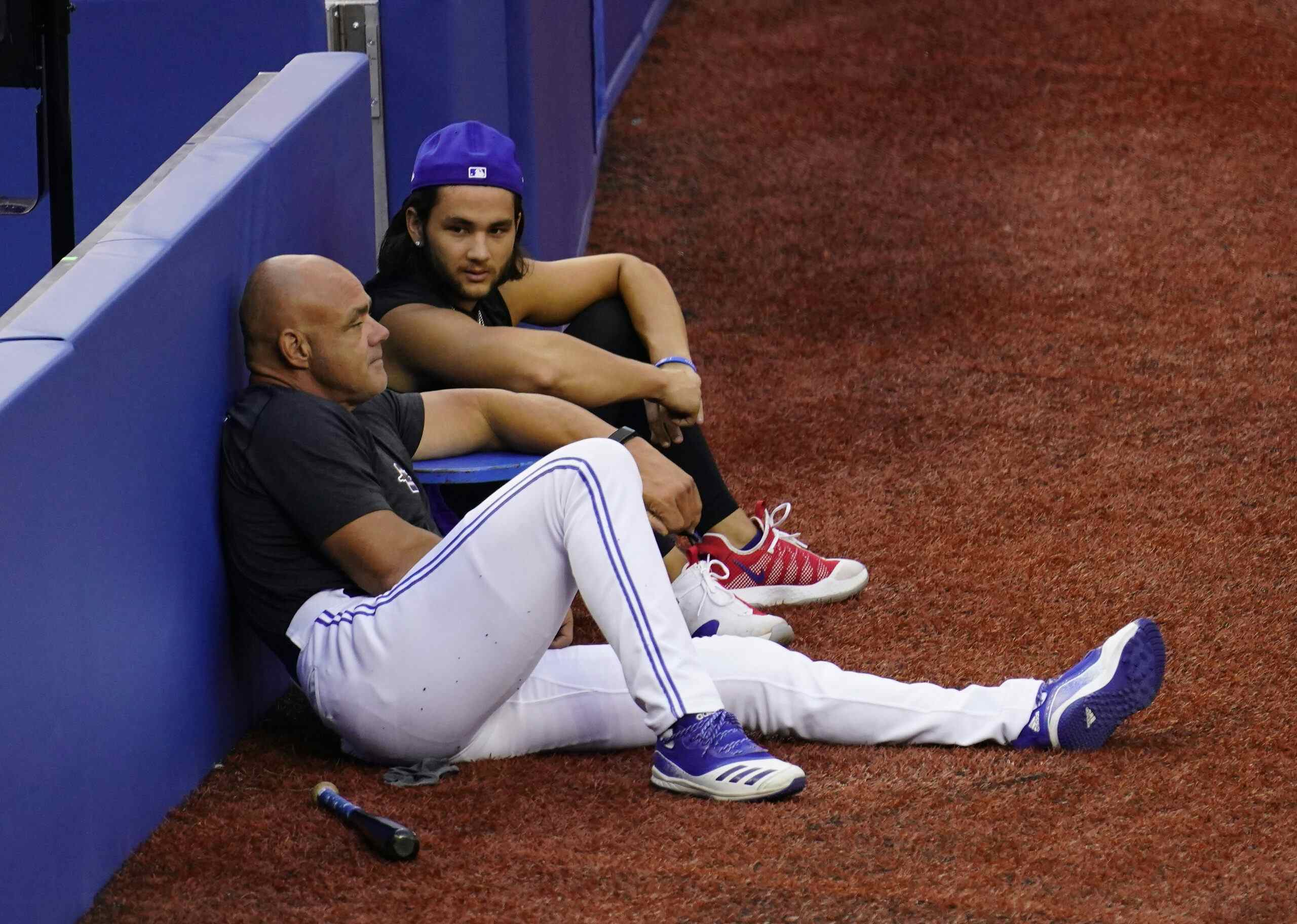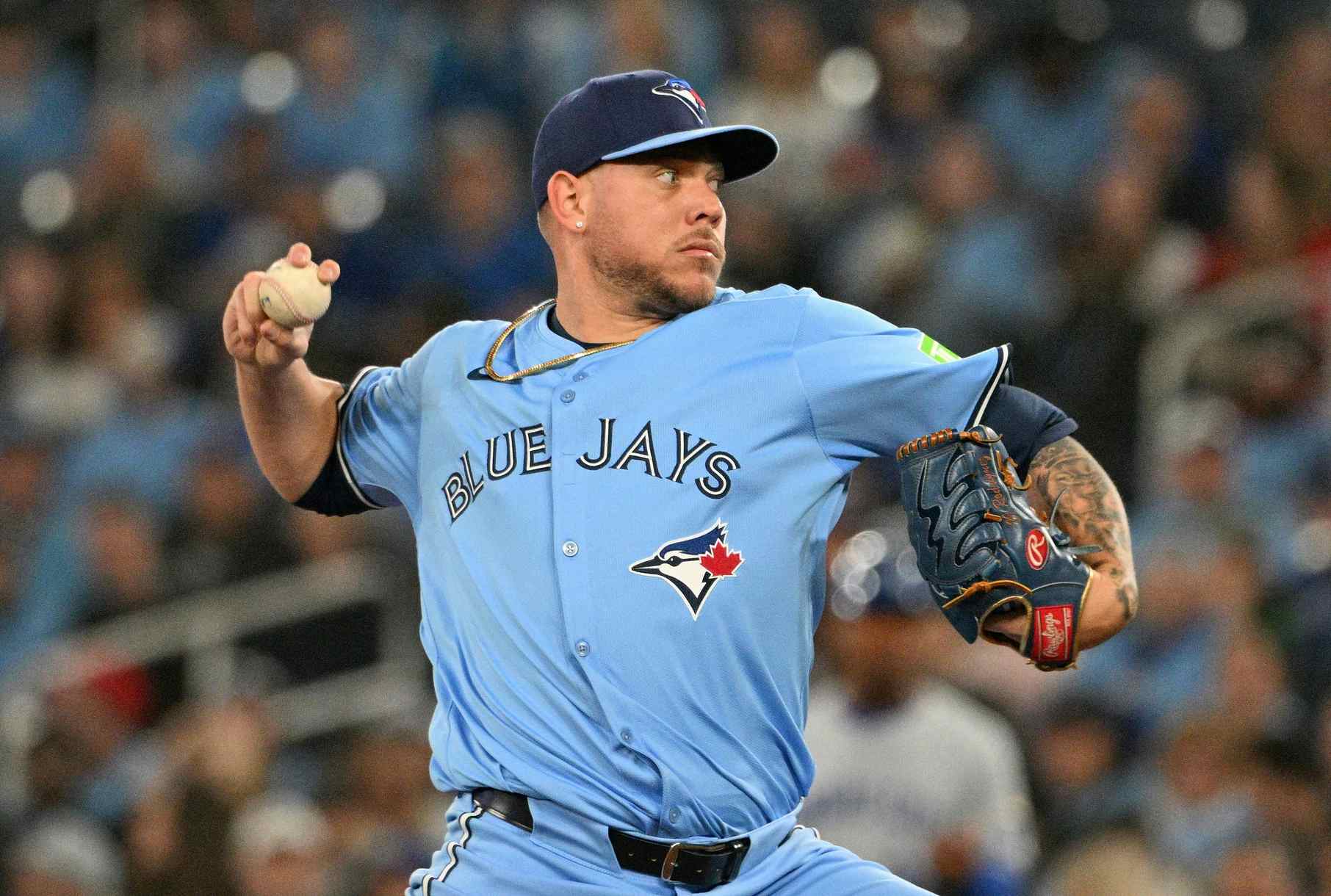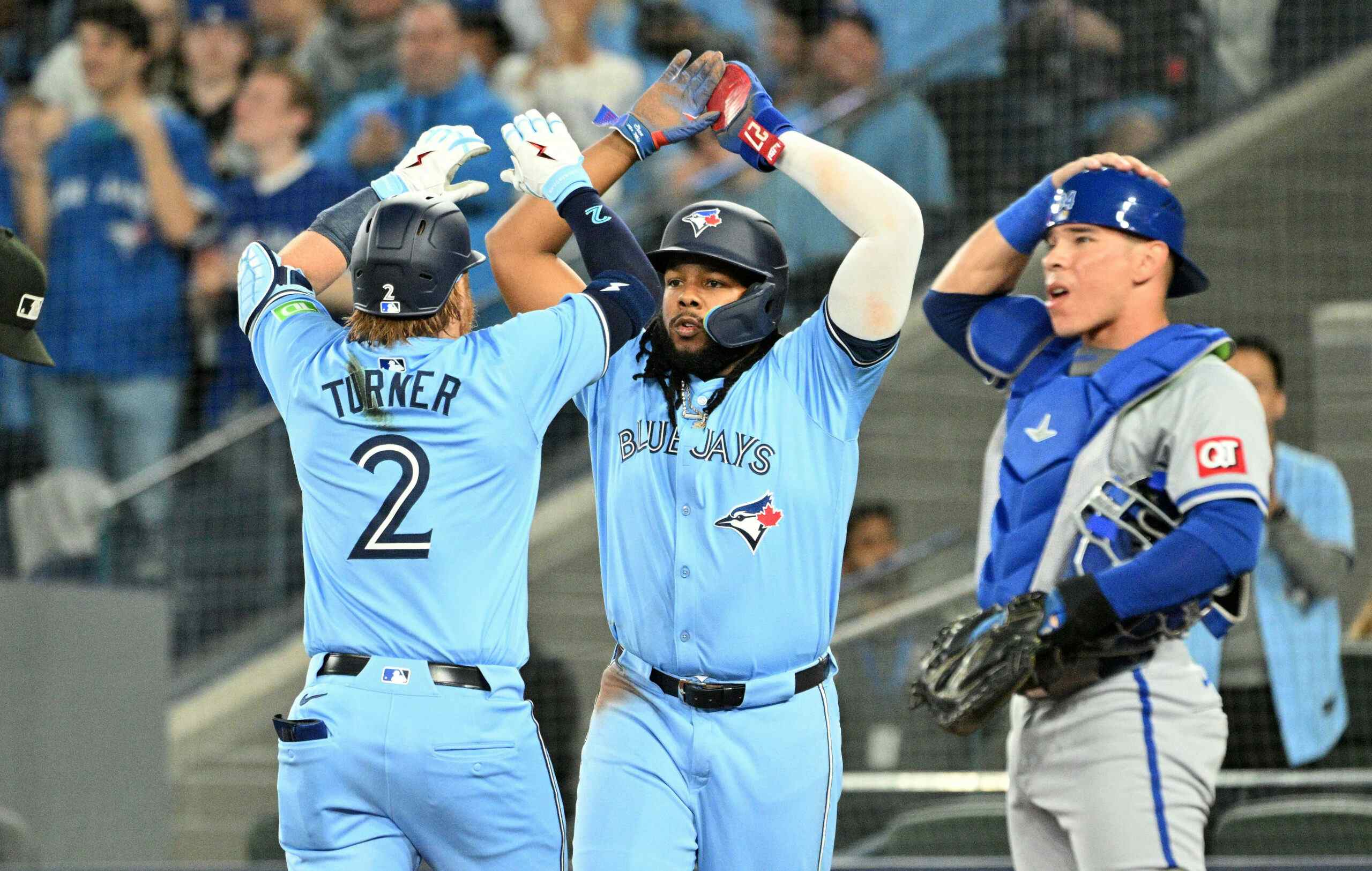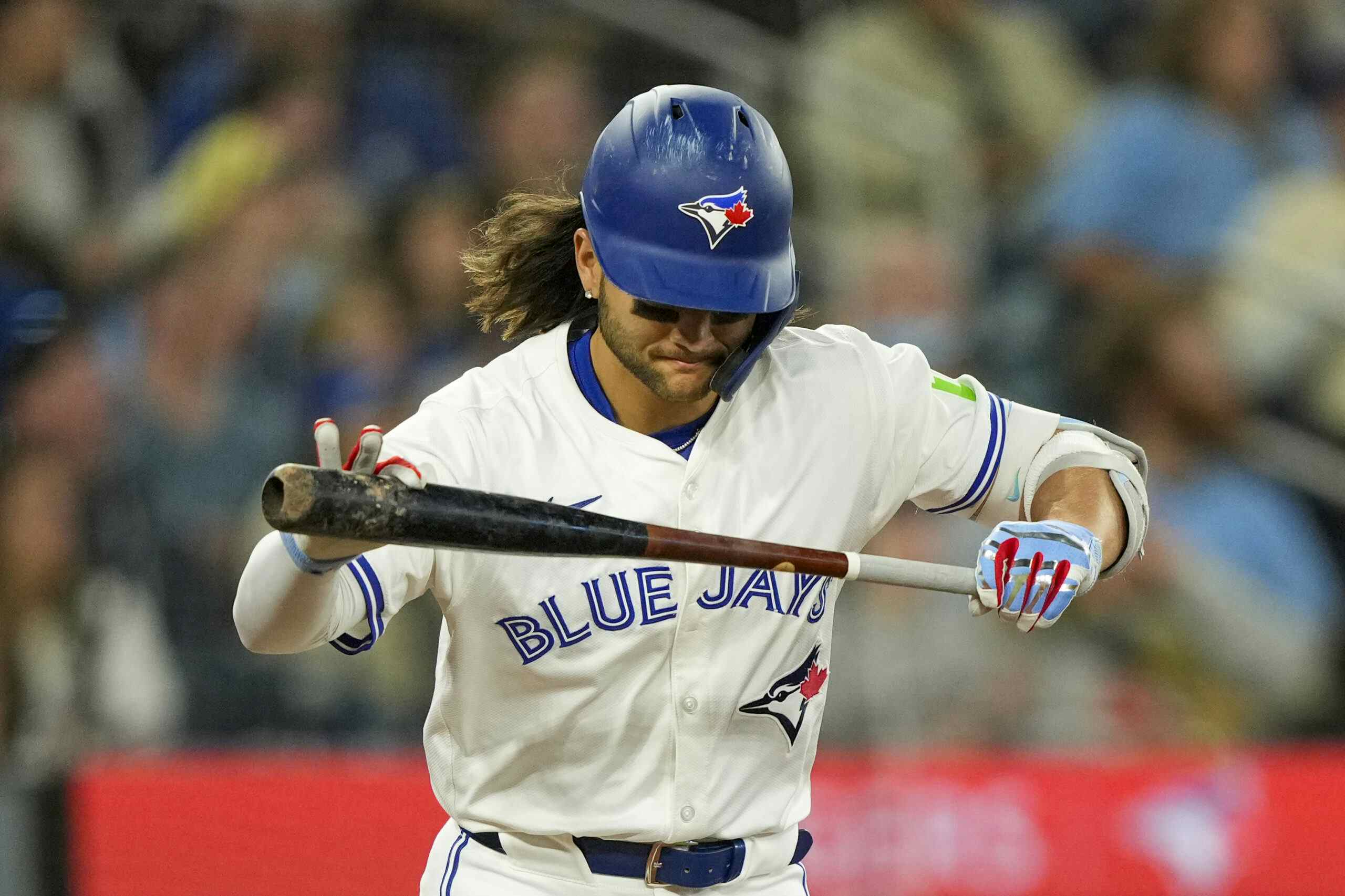Digging into Vladimir Guerrero Jr.’s defensive struggles
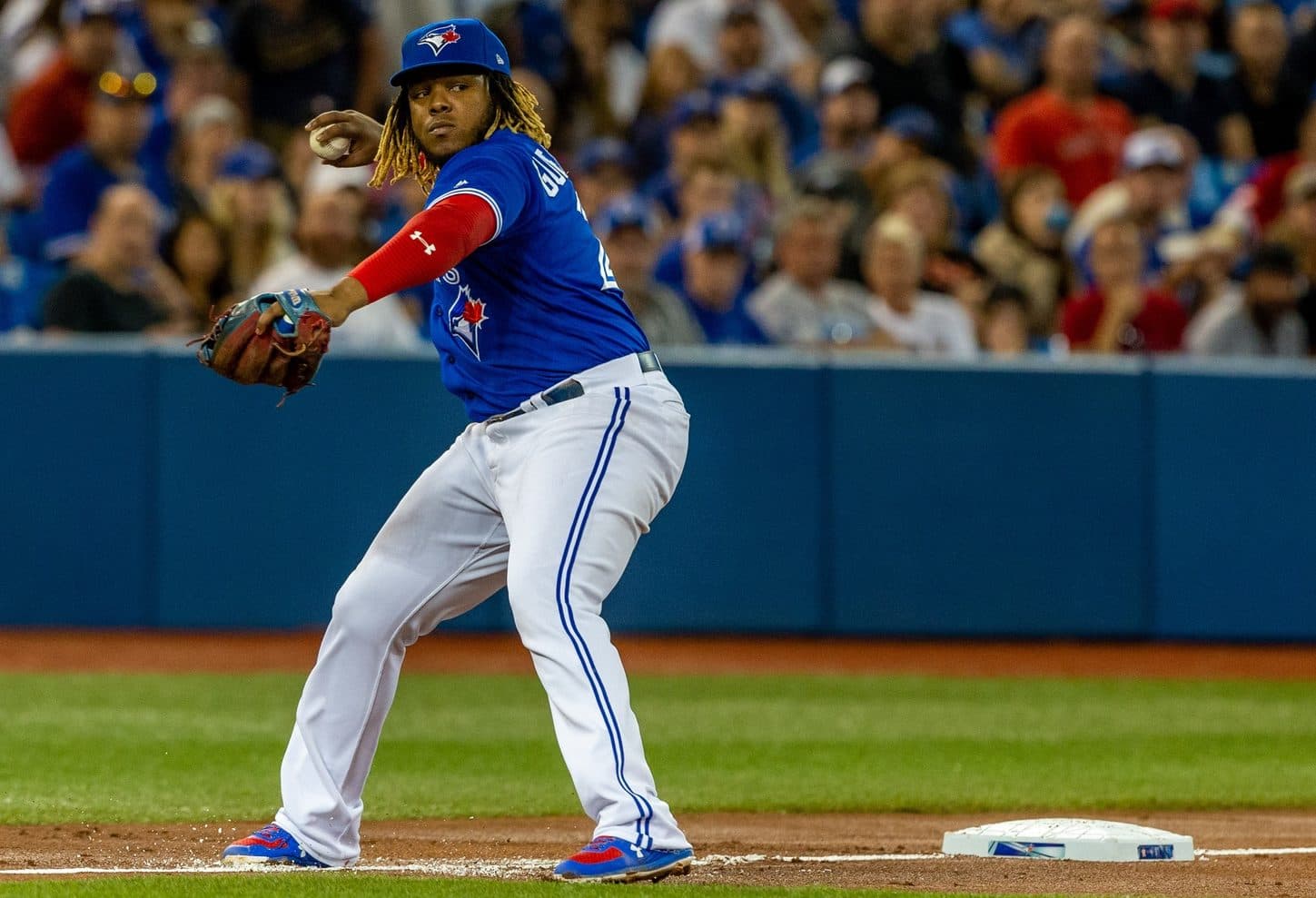
By Ian Hunter
4 years agoEarlier this week, MLB Statcast released its Infield Outs Above Average Leaderboard, and along with it, a treasure chest of defensive metrics. If you scroll to the end of the page, you’ll find one name at the very bottom of the list: Vladimir Guerrero Jr.
In his first full season at third base, Vladdy ranked 217th of 217 qualified infielders under the Outs Above Average metric with -16. Conversely, the gold standard at third base is someone like Nolan Arenado, who was worth +17 OAA at third base in 2019.
Not only did Guerrero struggle at the plate this past season, he also had difficulty fielding his position at third base. Conventional defensive metrics uncovered his issues at third base, and this new Outs Above Average metric and Defensive Runs Saved painted a similar picture for Vladdy at the hot corner in 2019.
Where it gets really interesting is when you delve into each player’s individual Statcast defense (like Guerrero’s for example).
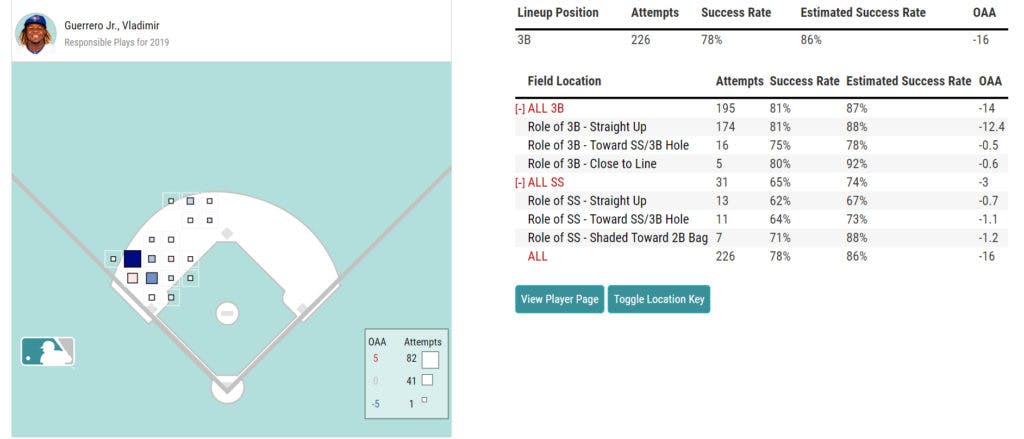
Guerrero’s arm has never been the issue, and anecdotally, I attributed his defensive struggles to a lack of range at third base. Of his 17 errors in 2019, only four were throwing errors; the other 14 were fielding errors.
It was surprising to see the bulk of Guerrero’s struggles came when he played his position straight up at the traditional third base spot on the infield. That’s where he was deducted the bulk of his -17 OAA: -12.4 OAA came at the third base position when he played straight up.
When it comes to directional plays, Guerrero did a decent job on plays moving to the first base side (only -2 OAA) and fared a little worse to the third base side (-2 OAA), but where he struggled was charging in on plays when stationed at third base and shortstop (-10 OAA).
Again, the surprising part was how these weren’t high degree difficulty plays that Vladdy struggled with. On plays with an estimated success rate of 90% of more, he posted -11 outs above average. Conversely, a third baseman like Arenado posted +6 outs above average on plays with a 90% + estimated success rate.
Below is a prime example of how Guerrero didn’t accurately judge the speed of the baserunner and failed to get the ball across the infield quickly enough.
Not to make excuses for him, but in this case with Tim Locastro of the Diamondbacks (who was drafted by the Blue Jays, by the way), it could have been a case where Guerrero wasn’t aware of the scouting report on Locastro, who was the fastest runner in baseball measured by Sprint Speed according to Statcast.
In this case below, Guerrero was lax in the field, double clutched, and sent the throw wide to Justin Smoak at first base. This is a play Guerrero should make 99 times out of 100. It’s a much more egregious defensive error than the previous error above.
It also may be a case of Guerrero “learning on the job” as he navigated the third base position for the first time in his Major League career. Players rarely break into the bigs and play Gold Glove-calibre defense like Arenado or Matt Chapman.
An interesting case study and comparable might be Rafael Devers. He struggled at the hot corner during his rookie campaign in 2018 and was worth -8 OAA, ranking him 32nd among 35 qualified third baseman.
Not only did Devers turn the corner at the plate in 2019, he also improved at his position, bumping up to +7 OAA in 2019, which ranked him fourth among MLB’s third basemen. That’s a 15 outs above average swing from year-over-year for Devers.
It’s also worth noting that Guerrero spent each month of the season in negative Infield Outs Above Average territory, save for September when he posted a +1 OAA, so there was some slight defensive improvement by season’s end.
The Blue Jays surely hope Guerrero has the same defensive bounce-back in the field in 2020. He’s always had the arm strength to play the third base position, the question has always been his range. Despite a difficult year at the hot corner, unless the Blue Jays have a much better option at third base, it makes little sense to pull the parachute on Vladdy at third base entering year two of his MLB career.
While most people are reserved to the fact that he’s destined to play first base for the Blue Jays, Guerrero’s bat plays better as a third baseman, rather than a first baseman. His value lies in being a plus bat for the Blue Jays at third base, where it’s much more difficult and costly to find a capable fielder and hitter, rather than first base, where solutions are a dime-a-dozen.
Recent articles from Ian Hunter

